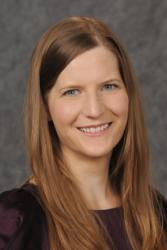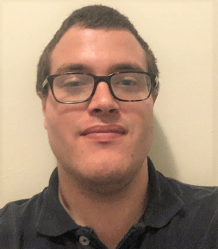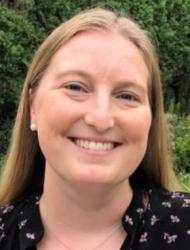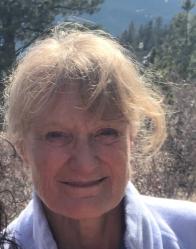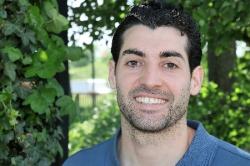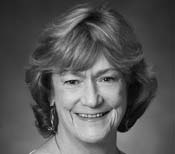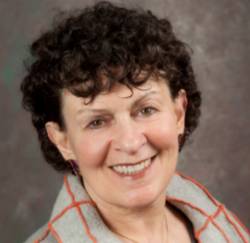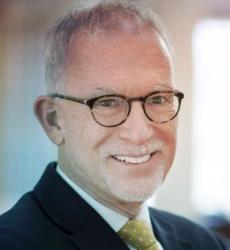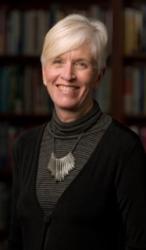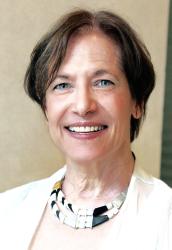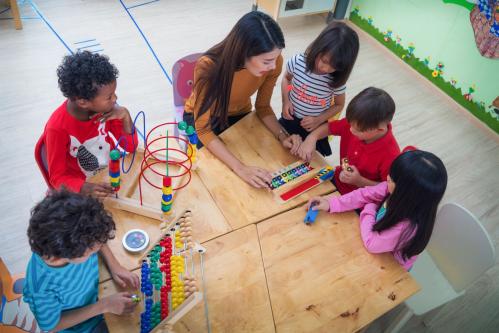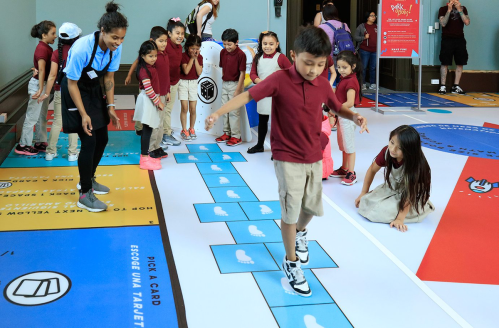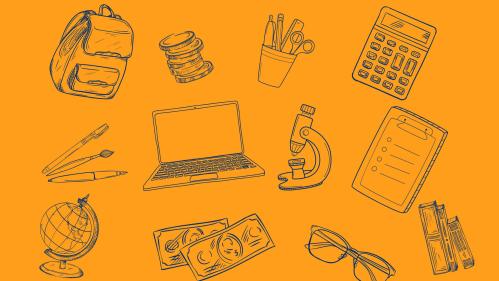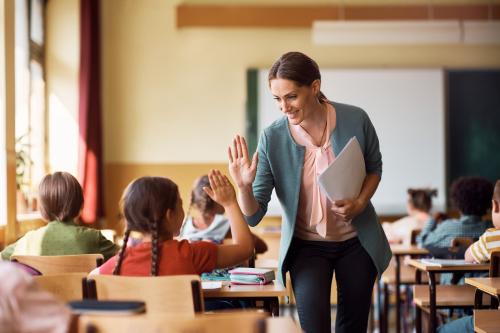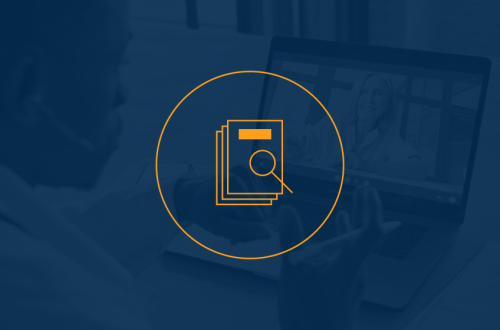We want a society run by people who are smart, yes, but who are also wise, perceptive, curious, caring, resilient, and committed to the common good.
David Brooks
Education, especially in public or state schools, transforms societies. It promotes innovation and supports social mobility (e.g., Chetty et al. 2011; Hyman 2017, 268-270; Jackson and Mackevicius 2024, 422-427; Winthrop et al. 2013, 5, 13). Our current model of education helped move the United States (U.S.) and other countries into the Industrial Age (Darling-Hammond 2022, 54; Winthrop et al. 2017, 14). However, it is less effective at developing the skills needed for individuals to thrive in this Information Age and beyond.
One way to adapt education for our time is through what we call Active Playful Learning (APL), a pedagogical framework that is evidence-based, practical, and uniquely co-designed with scientists and educators. It simultaneously maintains the focus on traditional content, like math and reading, while also supporting a broader suite of skills. The approach brings more agency to both teachers and students, and promotes more joyful and deeper learning (Blinkoff et al. 2023, 16; Hirsh-Pasek et al. 2022; Nesbitt et al. 2023, 2-5). This paper is the first report of a large-scale, multi-site U.S.-based study that examines APL in classrooms with teachers. The participating teachers engaged in instructional coaching on APL, and measures evaluated the intervention’s effects on teachers’ instruction, as well as their students’ classroom experiences. Here we describe APL, the study, and preliminary results from the pilot year.
Exploring the wider educational context
Two factors can inform the evolution of the education system. The first is that scientists have discovered a great deal about how children learn. Currently, just a few of those discoveries make their way into classrooms. The “factory model,” in which teachers deliver information to passive students in large groups and learning is rote, remains the dominant mode of education around the world (Darling-Hammond 2024, 218, 220; also see Winthrop et al. 2017, 15, and Baines et al. 2003 and Christopher and Nesbitt 2023 for empirical studies of this trend). The science suggests that children achieve deeper learning when they are active agents (e.g., DeCaro and Rittle-Johnson 2012, 560-561) and when the learning experience fosters social interactions (e.g., Trawick-Smith et al. 2016, 438, 440), such as with peers and teachers. The second factor is that children will be more engaged in learning and better prepared for the 21st century workplace if they develop a corresponding set of skills that will enable them to thrive in the classroom and beyond. Retention and recitation of facts is less valuable when generative artificial intelligence (AI) can retrieve information in seconds. Since today’s students live in the Information Age, their success relies on a wider array of skills, including collaboration, communication, curiosity, creative problem-solving, adaptability, and critical thinking (Golinkoff and Hirsh-Pasek 2016, 12-13, 15-19; Winthrop et al., 2017, 20-21). The gap between what education was and what it could be is creating a global crisis.
There is growing international momentum to think about student outcomes and instruction from this wider perspective. For example, a review of education policy documents from 102 countries indicated that 76 countries aimed to promote 21st century skills in their students to make them more innovative and effective learners. Despite some variability by country, the most frequent skills cited were communication, creativity, critical thinking, and problem-solving (Care et al. 2016, 7-9).
Recent efforts by the Organization for Economic Cooperation and Development (OECD) and the United Nations Education, Scientific and Cultural Organization (UNESCO) reflect an international expansion of education, from focusing solely on student achievement outcomes, such as reading and math assessment scores, to transforming the learning environment to promote a wider array of skills and competencies. For example, the OECD’s Future of Education and Skills 2030 Project aims, among other outcomes, to promote students’ agency, interdisciplinary knowledge, and social and emotional skills; and to support the curation of learning environments to foster those goals (OECD 2019, 5, 12-14). UNESCO’s Happy Schools initiative helps schools become joyful learning environments that “…enable school community members to embody positive attitudes and attributes that support lifelong learning, such as collaboration, communication, understanding, empathy, motivation, engagement, curiosity, resilience, and empowerment (UNESCO 2024, 17).” Changes to national education policies around the world, including in India (Government of India, Ministry of Human Resource Development 2020, 7-11), South Korea (Lee et al. 2023, 385-386), and Ghana (Ghana Education Service 2025), particularly highlight playful learning as a beneficial instructional method to enable all children to develop both academic competencies and fundamental approaches to learning that will help them continue to adapt to new challenges in the 21st century.
These shifts in perspective and policy are driven by an accumulation of evidence from the science of learning, an interdisciplinary field that combines evidence from education, psychology, neuroscience, linguistics, computer science, sociology, and anthropology, among other fields. The science of learning emphasizes how learning occurs in context, and how to craft learning processes that are more effective inside and outside the classroom (Meltzoff et al. 2009, 284; Sawyer 2014, 1).
Components of the APL approach presented here were introduced in the book “Making Schools Work: Bringing the Science of Learning to Joyful Classroom Practice,” an evidence-informed and practical guide to the application of the science of learning in classrooms co-authored in 2022 by a team of scientists and educators. This work built both on academic papers that identified principles of how children learn based on the science of learning (Hirsh-Pasek et al. 2015, 7-19; Zosh et al. 2018, 4-8) and the book “Becoming Brilliant: What Science Tells Us About Raising Successful Children.” This book identified what students need to learn – skills that are essential for success in the 21st century (Golinkoff and Hirsh-Pasek 2016).
The APL approach continued to evolve in subsequent academic publications (Blinkoff et al. 2023, 16-18; Nesbitt et al. 2023, 2-5). As this evolution was underway in 2023, a group of scientists and educators from the U.S. came together to connect theory to practice and develop APL as an alternative pedagogical framework for use in real classrooms. Teachers were trained on the APL approach through a combination of workshops and individualized and collaborative coaching, thereby making findings from the science of learning usable for─and with─teachers. This study adopted a train-the-trainer model in which local instructional coaches received training on the APL approach from the study team. This method enabled the local coaches to collaborate with participating teachers on APL implementation in a way that is intended to foster sustainability of APL in schools.
This working paper describes how the theory of APL evolved, along with preliminary results from the implementation of APL in schools in four U.S. states: Virginia, Texas, Illinois, and California.
The Brookings Institution is committed to quality, independence, and impact.
We are supported by a diverse array of funders. In line with our values and policies, each Brookings publication represents the sole views of its author(s).
